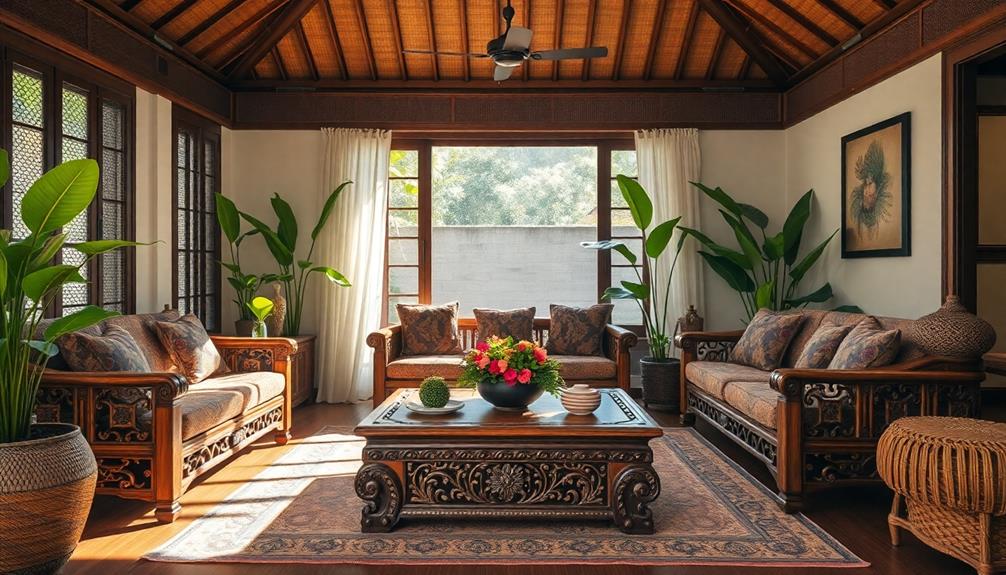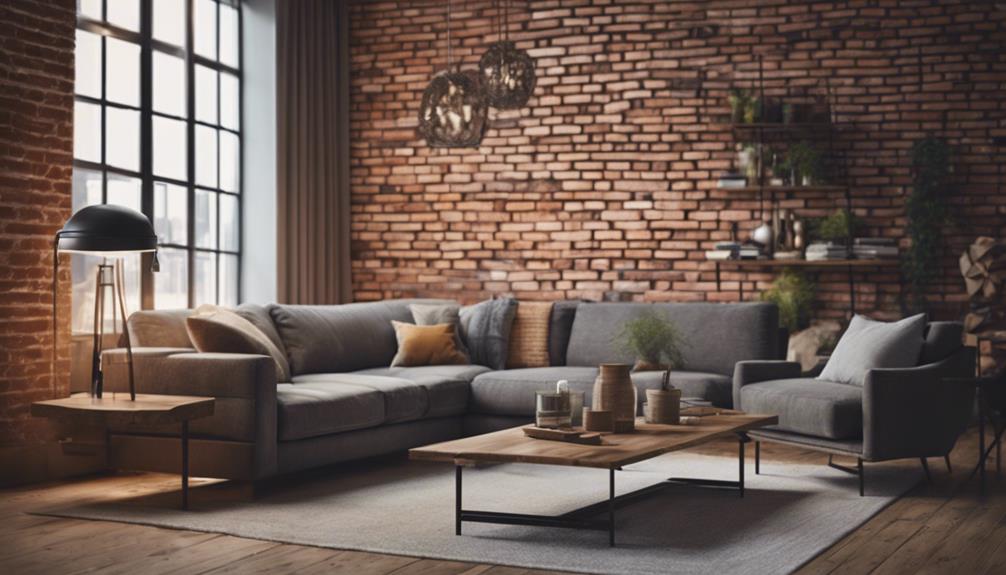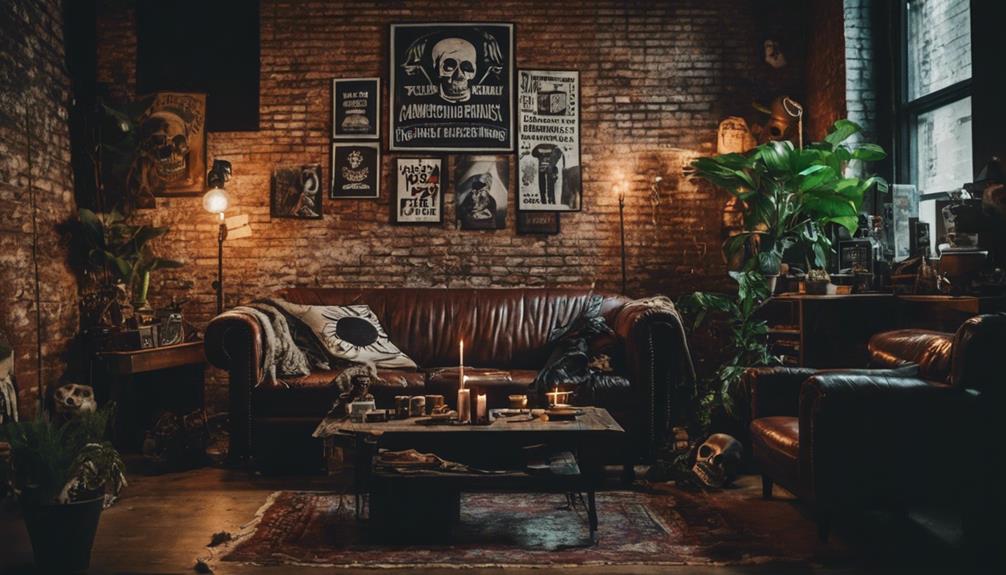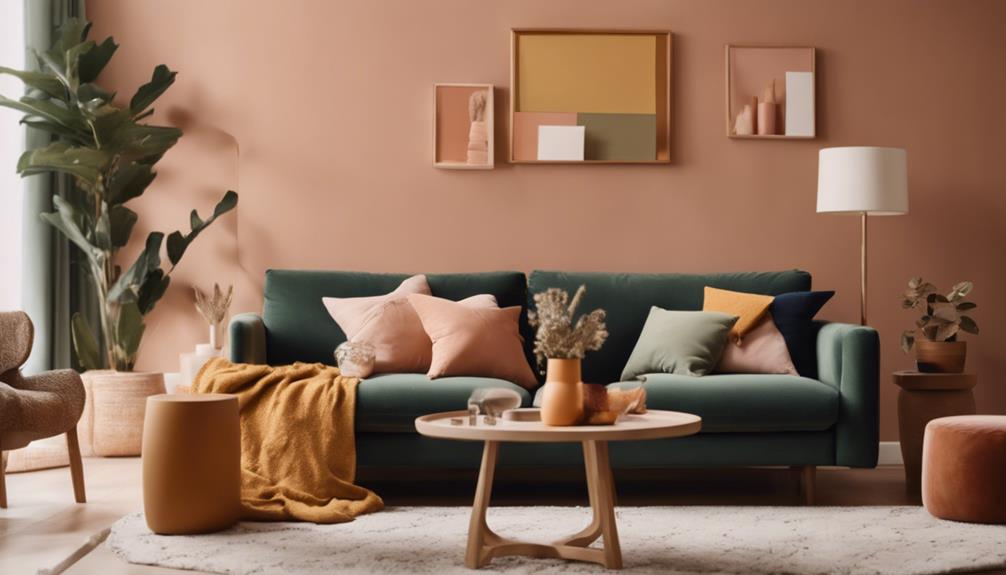To choose traditional Indonesian living room furniture, start by embracing the unique styles that reflect rich cultural motifs. Opt for durable materials like teak or mahogany, which offer beauty and longevity. Consider the craftsmanship, as intricate carvings and high-quality designs add character to your space. Measure your living area to guarantee a harmonious fit and evaluate how the furniture will interact with natural light. Don't forget about customization options to create a unique look that matches your taste. If you're enthusiastic to discover local shopping spots and care tips, you'll find plenty of valuable insights ahead.
Key Takeaways
- Consider the size of your living room to ensure furniture fits harmoniously and enhances functionality without overcrowding the space.
- Choose durable materials like teak or mahogany for longevity, pest resistance, and aesthetic appeal in traditional Indonesian designs.
- Explore customization options for unique dimensions and finishes that reflect your personal style and complement existing decor.
- Prioritize intricate carvings and cultural motifs to add artistic value and a touch of Indonesian heritage to your living space.
- Visit local markets and boutiques for a diverse selection of traditional furniture, allowing for negotiation and unique finds.
Understanding Indonesian Furniture Styles

When you immerse yourself in the world of Indonesian furniture styles, you'll discover an enchanting blend of artistry and functionality. Traditional Indonesian furniture showcases intricate carvings and organic shapes, reflecting the rich cultural heritage of the region.
You'll find that these pieces often utilize locally sourced materials like teak wood, which is prized for its durability and pest resistance. This makes it a practical choice for both indoor and outdoor living spaces. Additionally, many Balinese pieces emphasize natural materials that enhance the overall aesthetic of your home, creating a harmonious atmosphere.
Balinese furniture stands out with its distinctive designs, often featuring floral motifs and cultural symbols. This style beautifully merges traditional craftsmanship with modern design elements, providing a unique aesthetic that enhances your home.
Additionally, solid wood options such as mahogany, suar, acacia, and mango wood offer a variety of grains and colors, catering to diverse tastes.
Emphasizing natural materials and earthy color palettes, traditional Indonesian furniture creates a warm, inviting atmosphere. By choosing sustainable and eco-friendly options, you're not only adding beauty to your living spaces but also supporting environmentally responsible practices.
Understanding these Indonesian furniture styles allows you to make informed choices that reflect your personal style and values.
Assessing Material Choices

Choosing the right materials for your Indonesian living room furniture can greatly impact both the aesthetic and functionality of your space. When considering options, focus on the quality of materials used, as they can enhance durability and aesthetics. Here's a quick overview of popular choices:
| Material | Characteristics |
|---|---|
| Teak | Weather-resistant, pest-repellent, durable |
| Mahogany | Rich color, fine grain, classic elegance |
| Rattan | Eco-friendly, lightweight, flexible designs |
| Bamboo | Sustainable, lightweight, versatile |
Teak wood furniture is a prime choice due to its exceptional weather resistance and natural oils. Mahogany offers a timeless appeal, perfect for traditional and contemporary styles. If you're leaning towards eco-friendly options, rattan and bamboo provide sustainable designs that complement various decor styles.
Additionally, don't overlook the importance of non-toxic finishes. High-quality treatments can greatly enhance the longevity of your furniture, protecting it against humidity and wear. By evaluating these material choices, you'll guarantee that your living room reflects both skilled craftsmanship and unique designs.
Evaluating Design and Craftsmanship
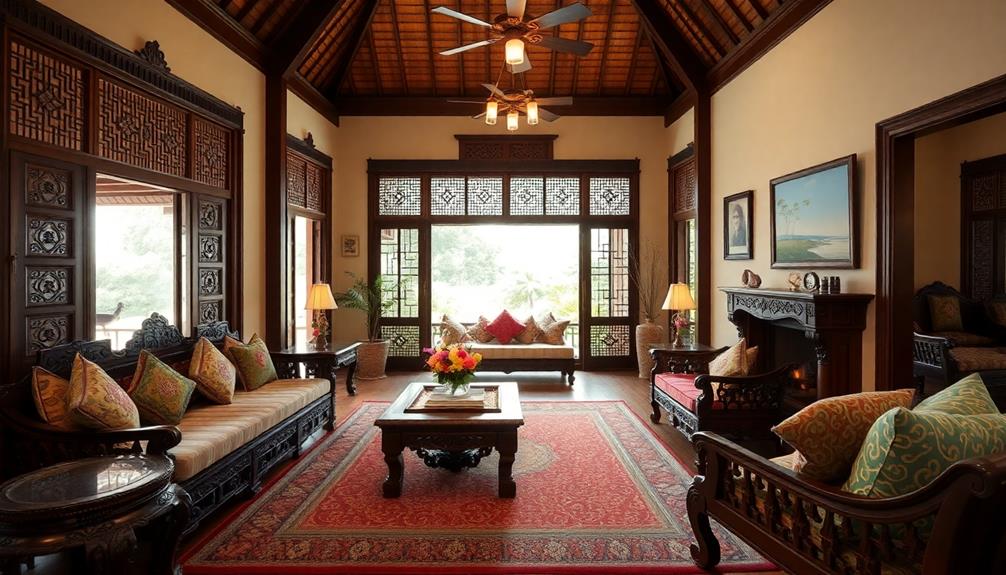
The beauty of traditional Indonesian living room furniture lies in its intricate designs and exceptional craftsmanship, which together tell a story of cultural heritage and artistic expression.
As you evaluate pieces, pay close attention to the unique designs that showcase local motifs and symbols, adding a personal touch to your space. Many of these designs are inspired by traditional practices, similar to those seen in Indonesian decor masks, which further enrich the cultural narrative of your home.
The craftsmanship of these items is a reflection of the skills of Indonesian artisans who use time-honored techniques to create functional works of art. High-quality materials like teak and mahogany not only enhance the aesthetic appeal but also guarantee durability, making your furniture a lasting investment.
When examining the joinery techniques, look for methods like mortise and tenon, which indicate superior quality and longevity. These techniques contribute notably to the stability and strength of the furniture.
Ultimately, the intricate carvings and thoughtful designs reflect the rich cultural background of Indonesia.
Considering Size and Space

Finding the right fit for your living room starts with measuring your space accurately. This guarantees that traditional Indonesian furniture won't overcrowd your area and maintains a good flow. Incorporating elements like vibrant colors and intricate patterns can enhance the aesthetic appeal of your living space while maintaining functionality.
Here are three key considerations:
- Measure your living room dimensions: Know the length and width of your space to determine what size and weight of furniture will fit comfortably.
- Evaluate existing furniture: Look at your current pieces to see how new items can integrate seamlessly, guaranteeing proportions are harmonious.
- Plan for access and natural light: Consider doorways, windows, and pathways when arranging your layout, as these elements influence both functionality and aesthetics.
Balinese furniture, in particular, can be larger than standard sizes, so account for that in your planning.
Aim for a layout that enhances functionality, allowing enough room for movement and interaction. This way, you'll showcase the beauty of traditional Indonesian designs while guaranteeing your living space remains inviting and practical.
Benefits of Traditional Furniture

Investing in traditional Indonesian furniture offers numerous benefits that elevate your living space. One of the standout features is the durability and resistance of high-quality materials like teak furniture, guaranteeing a long-lasting investment. These pieces withstand pests and weather, making them ideal for any environment.
Additionally, many of these pieces can be complemented by traditional artistry found in masks, enriching the overall aesthetic of your living room.
Traditional Indonesian furniture showcases intricate designs that reflect the country's rich cultural heritage, adding unique artistic value to your home decor. This craftsmanship tells a story, enhancing the aesthetic appeal of your living room while also providing functionality of living spaces.
By choosing traditional furniture, you also support sustainable practices. Many manufacturers prioritize responsibly sourced materials and eco-friendly production methods, allowing you to feel good about your purchase.
Moreover, you'll find a variety of customization options available, letting you tailor dimensions and finishes to fit your specific space and personal taste. This guarantees that the furniture you choose not only complements your style but also fits perfectly within your living room.
Shopping Locations in Indonesia

Jakarta's vibrant shopping scene is a treasure trove for those seeking traditional Indonesian living room furniture. The city's rich cultural heritage is reflected in its diverse selection, making it an ideal destination for both locals and tourists alike.
Whether you're after high-end pieces or unique finds, you'll discover plenty of options. Here are three must-visit locations:
- Kemang – This area features high-end boutiques showcasing exquisite traditional Indonesian furniture.
- Pasar Santa – A local market offering affordable vintage handcrafted furniture that reflects the beauty of Indonesian artistry and its cultural significance.
- Indonesia Design District – A curated selection of contemporary and traditional furniture options to suit various tastes and budgets.
As you explore these shopping locations, don't forget to negotiate prices at local markets; you might snag a charming piece of decor at a fantastic price.
Many boutiques and markets also offer customization services, allowing you to tailor furniture dimensions and finishes to fit your living space perfectly.
From intricate carvings to vibrant fabrics, the variety available in Jakarta makes it easy to find that unique decor item you've been dreaming of.
Embrace the adventure of shopping and immerse yourself in the rich culture that traditional Indonesian furniture embodies!
Customization Options Available
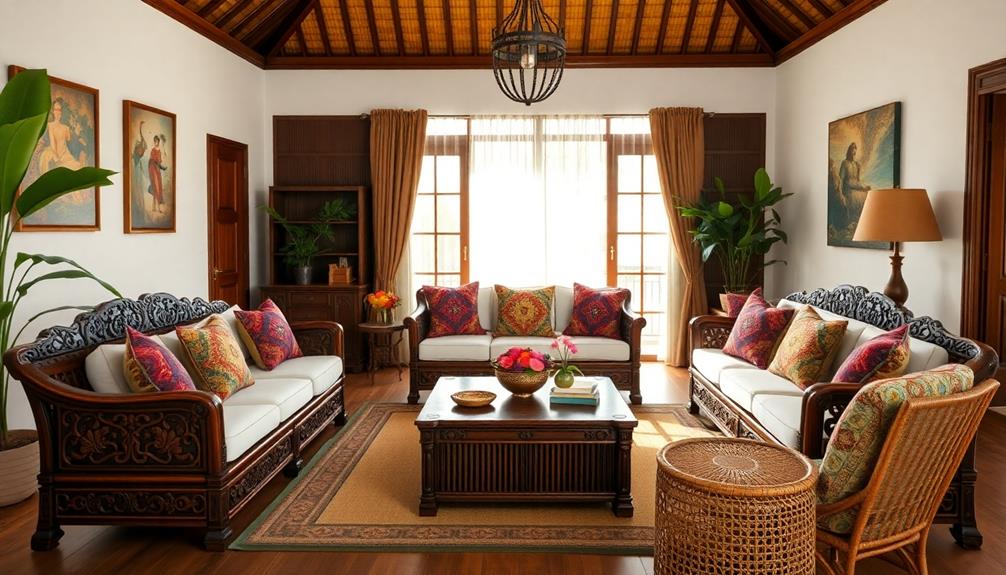
Custom furniture options in Indonesia allow you to create a living room that truly reflects your style and needs. Many Indonesian furniture manufacturers offer bespoke services, giving you the freedom to customize dimensions, finishes, and styles. You can choose specific wood types like teak wood or mahogany, which affect both aesthetics and durability.
Additionally, artisans often incorporate traditional motifs and designs, enabling you to showcase your personal tastes and cultural influences. You can also modify structural features to enhance functionality, such as adding storage solutions or adjusting seating arrangements.
Here's a quick overview of some customization options available:
| Customization Aspect | Details |
|---|---|
| Wood Type | Select from teak, mahogany, or others |
| Design Style | Traditional motifs or modern aesthetics |
| Structural Modifications | Add storage, change seating arrangements |
| Lead Time for Production | Typically ranges from weeks to months |
Maintenance and Care Tips

Taking care of your traditional Indonesian furniture is essential for keeping it looking great.
Incorporating elements like Indonesian decor masks can enhance the aesthetic appeal of your living space while promoting appreciation for local craftsmanship.
You'll want to regularly dust it and use mild soap with warm water for cleaning—just avoid harsh chemicals.
Plus, protecting it from humidity and direct sunlight will help maintain its beauty for years to come.
Regular Cleaning Practices
Maintaining the beauty and durability of traditional Indonesian living room furniture requires regular care and attention. Incorporating elements of traditional Indonesian style home decor can enhance the overall aesthetic while guaranteeing your pieces remain in excellent condition.
Here are three essential cleaning practices to help you protect your investment:
- Dust Regularly: Use a soft, lint-free cloth to dust your furniture frequently. This prevents the buildup of dirt and allergens while preserving the finish.
- Gentle Cleaning: For deeper cleaning, mix mild soap with warm water. Avoid harsh chemicals as they can damage the wood or finishes, especially on quality pieces like teak and mahogany.
- Polish and Condition: Every few months, apply a quality wood polish or conditioner to nourish the wood and maintain its natural luster.
In addition to these practices, it's vital to protect your furniture from humidity and direct sunlight by placing it in well-ventilated areas.
Always use coasters or mats under hot or wet items to prevent heat and moisture damage.
Preventive Care Measures
To keep your traditional Indonesian living room furniture looking its best, implementing preventive care measures is just as important as regular cleaning.
Start by regularly dusting your furniture with a soft, dry cloth to prevent dirt buildup and maintain its natural beauty. When it's time for cleaning, use a mild soap and warm water solution; avoid harsh chemicals since they can damage the wood finish or upholstery.
Consider incorporating luxury tropical designs to enhance the overall aesthetic of your space while caring for your furniture. Humidity can harm your furniture quality, so be certain to protect it by positioning pieces away from windows and controlling moisture levels in your home.
Every few months, apply a wood conditioner or polish specifically designed for teak or other woods to nourish and protect the surface. This simple maintenance step helps prolong the life of your furniture.
When not in use, store cushions and removable covers in a cool, dry place to prevent mold and maintain they retain their quality over time.
Frequently Asked Questions
What Is the Best Wood for Furniture in Indonesia?
When choosing the best wood for furniture in Indonesia, consider teak for durability, mahogany for rich color, rattan for comfort, bamboo for eco-friendliness, and solid woods like suar or acacia for unique aesthetics.
What Is Most Indonesian Furniture Made Of?
Ever wondered what gives Indonesian furniture its charm? Most pieces are crafted from high-quality hardwoods like teak and mahogany, renowned for durability. Rattan and bamboo add flexibility, while solid wood options bring unique beauty to your space.
What Type of Furniture Do You Want to Have in Your Living Room?
You'll want a mix of comfortable sofas and traditional teak chairs to create an inviting space. Adding multifunctional pieces and unique decorative elements will enhance your living room's character and guarantee it feels cozy and stylish.
How to Match Different Living Room Furniture?
To match different living room furniture, consider scale and proportions, unify colors, mix textures, create balance with larger and smaller pieces, and use statement items to anchor the space without overwhelming it.
Conclusion
Choosing traditional Indonesian living room furniture can transform your space into a vibrant reflection of culture and craftsmanship. Did you know that over 80% of Indonesian furniture is handcrafted, showcasing intricate designs passed down through generations? By selecting the right pieces, considering materials, and exploring local shopping options, you'll not only enhance your home's aesthetic but also support artisans who pour their hearts into every creation. Embrace the beauty and uniqueness of Indonesian furniture and enjoy a living room that's truly one-of-a-kind.
